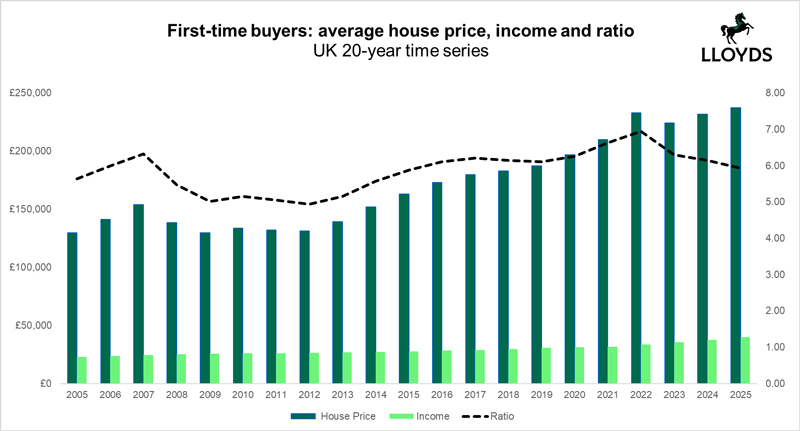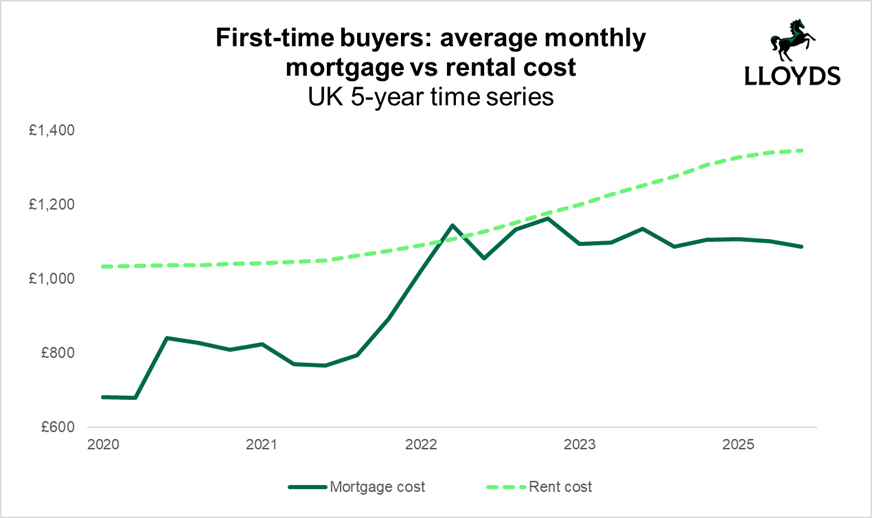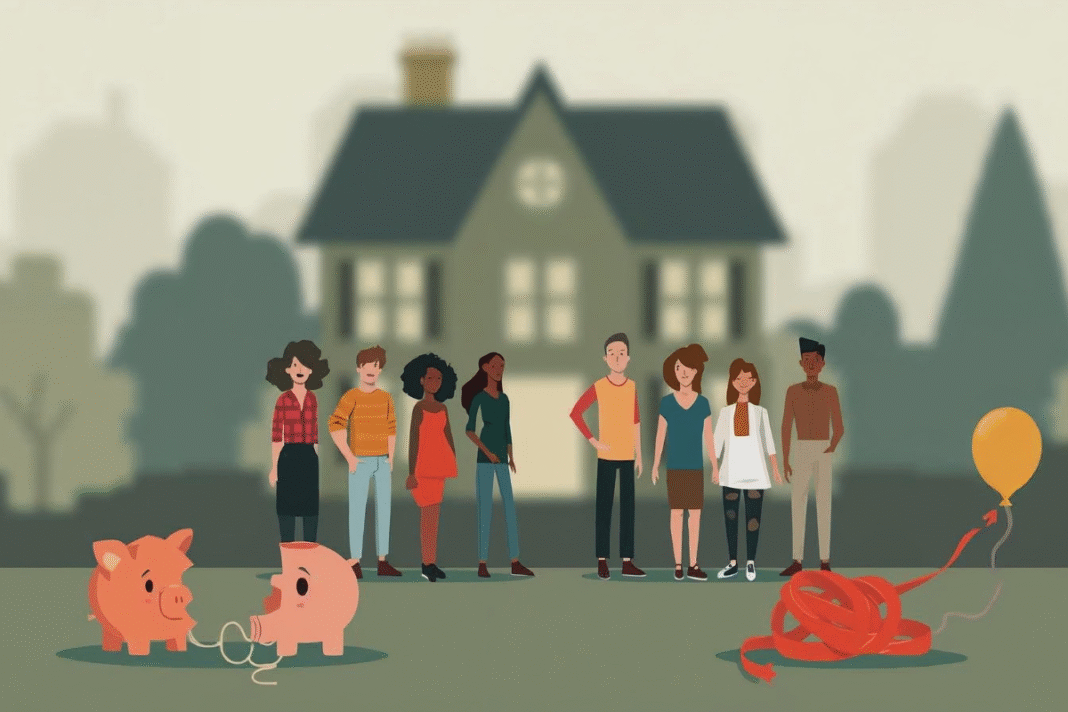The path to homeownership has become noticeably less challenging for first-time buyers over the last year, according to new figures from Lloyds.
The bank said affordability has improved to its strongest level since 2015, driven by modest house price growth, lower mortgage rates and rising earnings.
The typical first-time buyer home now costs five point nine times average annual earnings, down from six point two a year ago.
Although the average first-time buyer property price has increased by 2.4% to £237,518, this has been outpaced by a 6.2% rise in incomes to £40,021.
STEADY AS SHE GOES
Lloyds noted that monthly mortgage payments have held steady, averaging £1,087 – just 0.1% higher than last year – due to a fall in the average five-year fixed rate from 4.7% to 4.5%.
Mortgage payments now account for 32.6% of income, compared with 34.6% a year earlier. That marks the best affordability level since mid-2022, before interest rates rose sharply.

REGIONAL VARIATION REMAINS A DEFINING FEATURE
Affordability has improved in almost every UK region, although significant differences remain between the North and South. Greater London, the South East, Eastern England and the South West saw the largest reductions in price-to-income ratios, each falling by zero point four.
Despite this, these regions continue to be the most expensive parts of the UK for first-time buyers. By contrast, the North East remains the most affordable region with a ratio of three point nine. Scotland, Wales and Northern Ireland saw relatively small changes year-on-year.
LOCAL MARKETS SHOW WIDE AFFORDABILITY SPREAD
| Most and least affordable local areas by region or nation | |||
| Region | Local area | Property price | Price to income ratio |
| East Midlands | Mansfield | £166,604 | 4.6 |
| Rutland and Melton | £322,458 | 8.8 | |
| Eastern England | Boston and South Holland | £188,437 | 4.8 |
| St Albans | £544,099 | 13.7 | |
| Greater London | Barking and Dagenham | £313,270 | 6.2 |
| Kensington and Chelsea | £888,085 | 17.7 | |
| North East | South Tyneside | £134,671 | 3.8 |
| Northumberland | £210,960 | 5.9 | |
| North West | Blackpool | £138,206 | 3.6 |
| Trafford | £354,819 | 9.3 | |
| Scotland | Inverclyde | £136,599 | 3.4 |
| East Renfrewshire | £289,277 | 7.1 | |
| South East | Portsmouth | £212,331 | 5.1 |
| Elmbridge | £688,483 | 16.6 | |
| South West | Plymouth | £197,922 | 5.1 |
| Cotswolds | £368,300 | 9.6 | |
| Wales | Neath Port Talbot | £148,527 | 4.0 |
| Monmouthshire | £309,357 | 8.3 | |
| West Midlands | Stoke-On-Trent | £153,573 | 4.0 |
| Stratford-on-Avon | £339,382 | 8.9 | |
| Yorkshire & the Humber | Kingston upon Hull | £128,366 | 3.5 |
| North Yorkshire | £277,825 | 7.5 | |
Source: Lloyds Banking Group, ONS
Lloyds’ analysis highlights a stark divide between the most and least affordable local areas. Inverclyde in Scotland has the lowest price-to-earnings ratio at three point four, followed by Kingston upon Hull at three point five.
At the other end of the market, Kensington and Chelsea has a ratio of 17.7, with Elmbridge in the South East close behind at 16.6. The Cotswolds recorded the sharpest improvement in affordability, while Staffordshire Moorlands saw the biggest decline.
RENTING CONTINUES TO OUTSTRIP MORTGAGE COSTS
Average UK rents have risen by 5.5% over the last year to £1,346 a month. Rents now cost an average of £259 more per month than a typical first-time buyer mortgage, widening the gap by more than a third over the year.
Lloyds said the figures reinforce that for buyers able to raise a deposit, ownership can offer better long-term value than renting.

MORE BUYERS COMBINING INCOMES
The lender also noted the growing importance of joint applications. Some 62% of first-time buyers now purchase with another person. UK Finance data shows the average household income for a joint application at just over £65,000, reducing the effective price-to-income ratio to around 3.7.

Amanda Bryden, head of mortgages at Lloyds, said: “Buying your first home is still a big challenge, but things are moving in the right direction.
“Lower mortgage rates, stronger wages and slower house price growth mean it’s becoming a little easier to get on the ladder – the best it’s been for several years.”
She added: “Big national numbers often make the headlines, but the reality is that the housing market can look very different from one town to the next.
“If you’re searching for your first home, being flexible on location can really help – sometimes moving just a few miles from your preferred area can unlock much better value.”
“MISSED OPPORTUNITY”

Mary-Lou Press, NAEA Propertymark president, said: “While it is encouraging to witness an emerging trend of falling rates on offer across many key mortgage products, as well as rising wages which are helping to enhance first-time buyer affordability, the Autumn Budget seemed like a missed opportunity in many ways to further energise the housing market overall.
“With a population expected to exceed 70m people in less than five years, there is vast pressure to deliver new homes across all regions.
“Over the forthcoming year it will prove essential to see investment in the correct skillset and supply chains to enable this objective to become a reality.”










